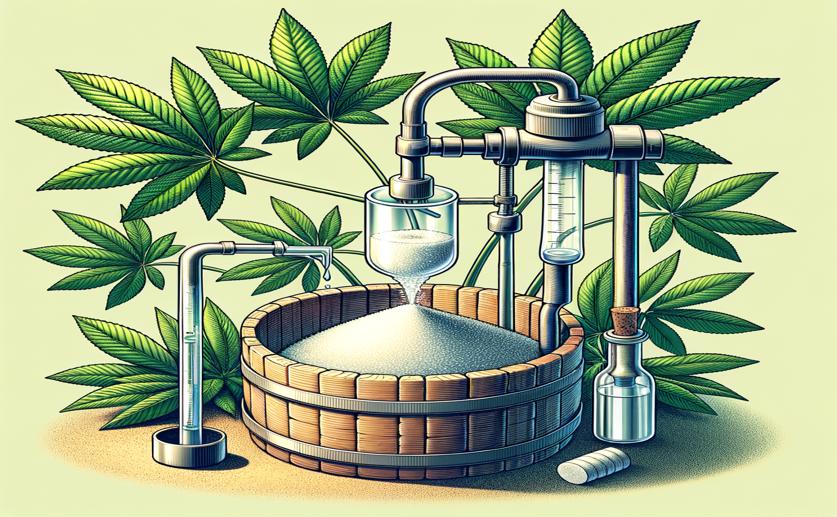New Easy Method to Produce Key Plant Sugar Without Complex Equipment

Image Source: Natural Science News, 2024
Key Findings
- Researchers at the University of British Columbia developed a method to produce large quantities of galactosylated XyGOs from tamarind kernel powder
- The method uses specific enzymes to simplify the production process, making it more efficient and scalable
- This new approach avoids complex purification steps by using baker's yeast to remove unwanted co-products, aligning with green chemistry principles
Xyloglucan oligosaccharides (XyGOs) are complex carbohydrates with significant potential in various chemical and biotechnological applications. These oligosaccharides are derived from xyloglucan, a polysaccharide found in the cell walls of plants. A recent study conducted by researchers at the University of British Columbia presents an optimized method to produce large quantities of galactosylated XyGOs from tamarind kernel powder (TKP) using specific enzymatic treatments[1].
Xyloglucans are a type of hemicellulose, which are polysaccharides that play crucial roles in plant cell walls by interacting with cellulose to strengthen the wall structure[2]. Understanding the structure-function relationships of xyloglucans has been challenging due to their complex and variable structures[3]. The new study addresses this by providing a scalable method to produce well-defined XyGOs, which can facilitate further research and application development.
The study utilizes tamarind kernel powder, an agricultural by-product, as the starting material. The researchers employed a highly specific endo-xyloglucanase enzyme to hydrolyze the xyloglucan in TKP, resulting in the production of XyGOs. To further simplify the product, they treated the XyGOs with β-galactosidase, reducing the complexity and yielding a branched heptasaccharide known as XXXG (Xyl3Glc4: [α-D-Xylp-(1 → 6)]-β-D-Glcp-(1 → 4)-[α-D-Xylp-(1 → 6)]-β-D-Glcp-(1 → 4)-[α-D-Xylp-(1 → 6)]-β-D-Glcp-(1 → 4)-D-Glcp).
One of the significant challenges in producing pure XyGOs is the removal of co-products, such as galactose. The researchers overcame this by fermenting the mixture with baker's yeast, which consumes the galactose, thereby avoiding the need for complex chromatography and other fractionation steps. This innovative approach aligns with the principles of green chemistry and engineering, emphasizing efficiency and environmental sustainability.
The importance of this study lies in its potential applications. The ability to produce large quantities of pure XyGOs and XXXG can significantly advance research in plant biology, particularly in understanding cell wall dynamics and interactions. Additionally, these oligosaccharides have potential uses as prebiotics, plant growth effectors, and building blocks for glycoconjugate synthesis.
This study builds on previous research into the composition and functions of plant cell walls. For instance, the cell walls of photosynthetic multicellular eukaryotes, including land plants and algae, are known to be dynamic and complex, with carbohydrate-rich structures that vary depending on developmental stages, cell types, and phylogenetic backgrounds[4]. Hemicelluloses like xyloglucans are crucial components of these cell walls, contributing to their strength and functionality[2]. By providing a method to produce well-defined XyGOs, the study from the University of British Columbia helps to further elucidate the roles these polysaccharides play in plant biology and their potential biotechnological applications.
In summary, the optimized method for producing galactosylated XyGOs from tamarind kernel powder represents a significant advancement in the field of plant carbohydrate research. The approach is efficient, scalable, and environmentally friendly, paving the way for broader applications of these complex carbohydrates in various scientific and industrial fields.
BiotechBiochemPlant Science
References
Main Study
1) A scalable, chromatography-free, biocatalytic method to produce the xyloglucan heptasaccharide XXXG.
Published 20th August, 2024
Journal: Biotechnology for biofuels and bioproducts
Issue: Vol 17, Issue 1, Aug 2024
Related Studies
Related Articles





 10th August, 2024 | Jim Crocker
10th August, 2024 | Jim Crocker